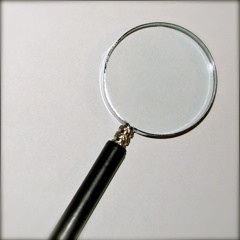In a series of posts, I’m outlining how to learn from a loss. Read part 1, oulining why failure is an effective teacher. Today’s post, detailing step one, finding out what happened, may seem straightforward. In fact, it is an emotionally challenging and intellectually demanding task. The team must dispassionately review the entire history of the procurement. They must ask detailed questions and dig into the specifics of the deal without assigning blame or trying to settle old scores. It means carefully examining the relevant documents, sales plans and briefings, the presentations, partner agreements, solution diagrams, internal reviews, the final proposal and hopefully the prospect’s feedback. It takes time and attention to detail, and it depends heavily on documentation. Without an audit trail, those conducting the assessment have to rely on interviews and the vagaries of human memory, and the process will take much longer.
Sales professionals depend on best practices and repeatable processes, but each opportunity is unique, and each post-loss fact-finding exercise is also unique. Thus, although it is tempting to use a checklist to complete the post-loss analysis, overly rigid analysis will prevent the team from uncovering what really happened. A variety of approaches are worth considering, and which is best will depend on the specific opportunity.
One approach is to assess events according to function: pricing, customer relationships, solution, etc. Another is to approach the opportunity from a chronological perspective. A third is to look at critical decisions that were made along the way. This is a time to ask tough questions and challenge accepted wisdom about corporate policies and established routines. The best practice in the world might not have been the right one for this specific opportunity.
When going to the customer for debrief, follow these suggestions to maximize the value of the interaction:
- Be a good loser. Behave in a respectful, friendly manner. If you act in a hostile manner, you are not likely to get useful information. Let the customer know that you are there to learn. Not only will you stand a better chance the next time—you could distinguish yourself from the other losers.
- Remember that the decision will not be reversed at the debrief. If you see a strong gap in their decision process, make note so you can strategize with your team after the debrief. Do not try to argue that your proposal should have been the winning one. It was not.
- Select the participants carefully. Bring people who will really listen rather than talk. Participants should be able to repeat what they have heard without filtering or exaggerating.
- Know your proposal intimately so when the customer refers to a strength or weakness, you will be able to tie it to a proposal section. If you know the proposal well and cannot make the connection, ask for specifics.
- If you have not been to a debrief before, role-play and rehearse ahead of time.
Keep up-to-date with Fast Track Tools by subscribing to our blog, via Twitter @fasttracktools and join our Facebook community!
photo by Jeffrey Beall
